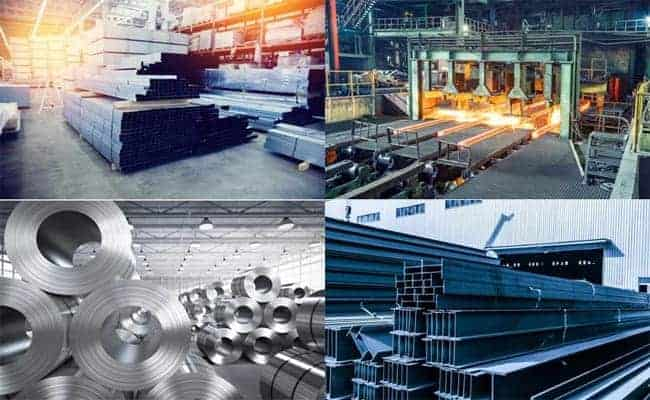The Role of TMT Bars in Seismic-resistant Construction
In the realm of civil engineering and construction, the seismic resistance of structures is a paramount consideration, especially in regions prone to seismic activity. The devastating consequences of earthquakes underscore the need for robust and resilient construction materials.
Thermo-mechanically treated (TMT) bars have emerged as a crucial component in seismic-resistant construction, providing the strength and ductility required to withstand the dynamic forces unleashed during an earthquake.
As we delve into the realm of construction materials, the significance of TMT bars in India, especially in the context of seismic-prone regions, cannot be overstated. This blog delves into the pivotal role of TMT bars in seismic-resistant construction and the key considerations for ensuring the safety and longevity of structures in seismic-prone areas.
1. Understanding Seismic Forces:
Before delving into the role of TMT bars, it is essential to comprehend the nature of seismic forces. Earthquakes subject structures to lateral forces and ground motion, causing buildings to sway and deform. The ability of a structure to absorb and dissipate this energy without undergoing catastrophic failure is crucial for minimizing damage and ensuring the safety of occupants. TMT bars in India are widely acknowledged for their superior strength and flexibility, making them a preferred choice for constructing earthquake-resistant structures.
2. Ductility and Energy Dissipation:
One of the primary attributes that make TMT bars indispensable in seismic-resistant construction is their high ductility. Ductility refers to the material's ability to deform without fracturing. During an earthquake, TMT bars exhibit exceptional ductility, allowing them to absorb and dissipate seismic energy through controlled deformation.
TMT manufacturers in India have responded to this demand by providing innovative solutions that go beyond conventional building practices. This property prevents sudden and brittle failure, contributing significantly to the overall resilience of the structure.
3. Yield Strength and Seismic Performance:
Yield strength is a critical parameter in the seismic performance of structures. TMT bars with higher yield strength provide the necessary stiffness to resist seismic forces effectively. However, it is crucial to strike a balance, as excessive stiffness may lead to a lack of ductility.
One of the leading TMT manufacturers in India, Aone, has been at the forefront of revolutionizing the construction industry. TMT bars, with their optimal combination of high yield strength and ductility, ensure structures can withstand seismic forces while exhibiting controlled deformation.
4. Grade of TMT Bars:
The grading of TMT bars plays a pivotal role in determining their suitability for seismic-resistant construction. Higher-grade TMT bars are designed to withstand greater loads and offer superior performance under seismic conditions.
The structural steel manufacturers in India, including those specializing in TMT bars, adhere to stringent quality standards. It is imperative to adhere to relevant industry standards, such as IS 1786:2008, and select TMT bars with the appropriate grade to ensure the desired seismic resistance of the structure.
5. Construction Design and Engineering:
The effectiveness of TMT bars in seismic-resistant construction is not solely dependent on the material itself but also on the overall design and engineering of the structure. Collaboration between structural engineers and architects is essential to ensure that TMT bars are strategically placed and integrated into the construction design to optimize their seismic performance.
As the demand for earthquake-resistant construction materials rises, the role of TMT bars in India becomes increasingly prominent. This collaborative approach considers factors such as building height, configuration, and the regional seismic hazard to tailor the construction to the specific requirements of the location.
6. Quality Control and Testing:
The reliability of TMT bars in seismic-resistant construction hinges on rigorous quality control and testing during the manufacturing process. Manufacturers must adhere to industry standards and conduct comprehensive quality checks to ensure that TMT bars meet the specified mechanical properties.
In the competitive landscape of steel manufacturing companies in India specializing in TMT bars stand out for their commitment to research and development. Periodic testing of samples ensures consistency and assures the performance of TMT bars in actual seismic conditions.
7. Building Codes and Regulations:
Compliance with building codes and regulations specific to seismic-prone regions is non-negotiable in seismic-resistant construction. Local authorities often prescribe stringent standards to enhance the seismic resilience of structures. Ensuring that construction practices align with these codes and regulations, including the use of specified grades of TMT bars, is fundamental in safeguarding against the devastating impact of earthquakes.
CONCLUSION:
In seismic-prone regions, the role of TMT bars in construction cannot be overstated. Their unique combination of high yield strength and ductility equips structures to withstand the formidable forces of earthquakes, minimizing damage and ensuring the safety of occupants. TMT manufacturers in India leverage state-of-the-art facilities and cutting-edge processes to ensure the highest quality standards.
The integration of TMT bars into construction designs, adherence to industry standards, and collaboration between stakeholders are integral to creating structures that not only endure seismic challenges but also stand as resilient monuments to human ingenuity and engineering prowess. By recognizing the critical role of TMT bars, we pave the way for safer and more robust infrastructure in seismic-prone areas.





Comments
Post a Comment